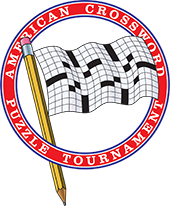Not your mother's crossword
Source: Columbia News ServiceDate: April 3, 2002
Byline: Leila Abboud
Not your mother's crossword: Technology breathes new life into an old game
As a child, Terry Landau used to look over her mother's shoulder as she did the daily crossword puzzle in the New York Herald Tribune. By age 15, she was hooked. Today, Landau still does daily puzzles, but quite differently from the way her mother did.Every night around 10 p.m., the 52 year-old paralegal logs on to the Internet from her Manhattan apartment to do the following day's puzzle on the New York Times Web site. Using crossword puzzle software, she types her answers into the black-and-white grid on the screen. When she finishes, Landau can instantly check her answers, and discuss the day's puzzle with other solvers in an online chat room on the Times Web site, www.nytimes.com.
"I don't get ink on my fingers anymore," Landau said.
Landau's experience is just one example of how technology is revitalizing one of America's most popular games. The Internet and new software have changed how people create and solve crosswords. Chat-rooms and Web sites have created community where none existed before, and attracted younger players to the game. With the help of online tutorials and puzzle-making software, more novices have started creating crosswords.
Today more than 50 million Americans do crosswords, and at least one appears in almost every newspaper. The simple and ubiquitous game, which was never trademarked or copyrighted, is a 20th-century American invention. Crossword fans --also known as cruciverbalists from the Latin — have been solving puzzles since the first one appeared in The New York World in 1913.
From the volume of mail, phone calls, and media attention he receives, Will Shortz, the editor of the New York Times crossword puzzle, believes that crosswords are enjoying a renaissance. "My feeling is that crosswords have never been more popular," said Shortz.
A record number of people attended last month's American Crossword Tournament in Stamford, Conn. Shortz, who organized the tournament, said attendance was up 30 percent from last year to 401 participants. For those cruciverbalists craving more, the American Crossword Federation will be host of a weeklong Alaskan cruise in August with daily instructional seminars on puzzle-solving strategy.
This is not the first crossword craze. After Simon & Schuster began printing books of puzzles in 1924, Americans developed crossword fever. In New York City, the public library had to limit dictionary use to five minutes per person. Dictionaries were placed in each train car for commuters. A cottage industry produced crossword-themed jewelry and clothing. Shortz's favorite artifact from this period is an abridged dictionary that could be worn on the wrist in place of a watch.
Today, puzzlers and constructors use a more sophisticated set of tools. Gone are the days when Terry Landau used her bookshelf of reference books to get through a particularly difficult puzzle. Today, she uses the cruciverbalists' best friend — the search engine Google.
Purists complain that reliance on such technology ruins puzzling. But Emily Cox and Henry Rathvon, a husband-and-wife puzzle-writing team who also run the New York Times chat room, think technology has had a more significant impact on the puzzle creator than solver. "Until the 1970s, crossword constructors had to rely entirely on pencil, graph paper, and the cerebral cortex to get a diagram filled with words," said Cox. Now they use software that includes databases of words and phrases to make puzzles.
"These are handy tools but they can't match the sheer fertility of the brain," said Rathvon. "There is still no match for a creative thinker who might use slang, pop catchphrases, names in the news, and offbeat phrases like 'yo mama' or 'says who.'"
Technology hasn't dimmed the passion that moves people to write crosswords. Most construct only as a hobby because freelance rates are so low. (The New York Times pays $75 per daily puzzle.) Among others, taxi drivers, accountants, graduate students and professional violists write the crosswords that run in America's daily newspapers.
Online forums, like one at the Web site cruciverb.com, are making constructors' jobs easier. On e-mail lists and bulletin boards, novices can get advice on how to write a good puzzle from more experienced constructors.
Peter Abide got his start in puzzle writing with the help of Cruciverb members. A longtime solver, the 42-year-old lawyer from Biloxi, Miss., found the Web site invaluable as he built his first puzzle. He wrote a grid, and came up with a theme to build the puzzle around. He posted the theme and, within a day, other constructors e-mailed him with suggestions on how to improve his work. It took Abide 50 hours to finish his first puzzle. Two years and three New York Times published crosswords later, Abide can construct a puzzle in three hours.
"I never would have thought to try writing puzzles," said Abide in a phone interview.
Will Shortz called Cruciverb.com an invaluable learning tool, and compared it with his own experience as a novice constructor at Games magazine 20 years ago. He used to take his puzzles into the editor's office and watch him do them. "It's just like a comedian or a singer before an audience, getting feedback," said Shortz. "Most people don't have a chance to work in editorial office like I did, but the Web site works in the same way."

